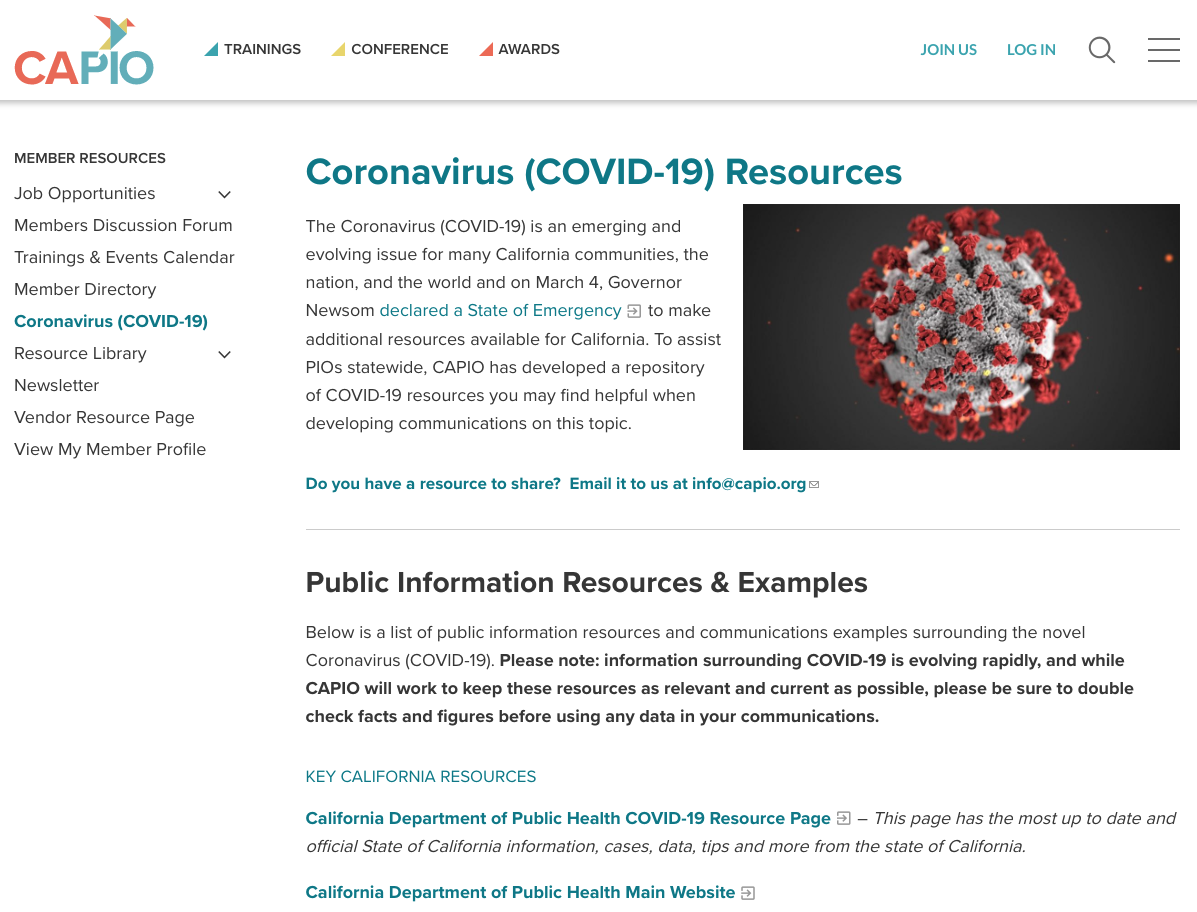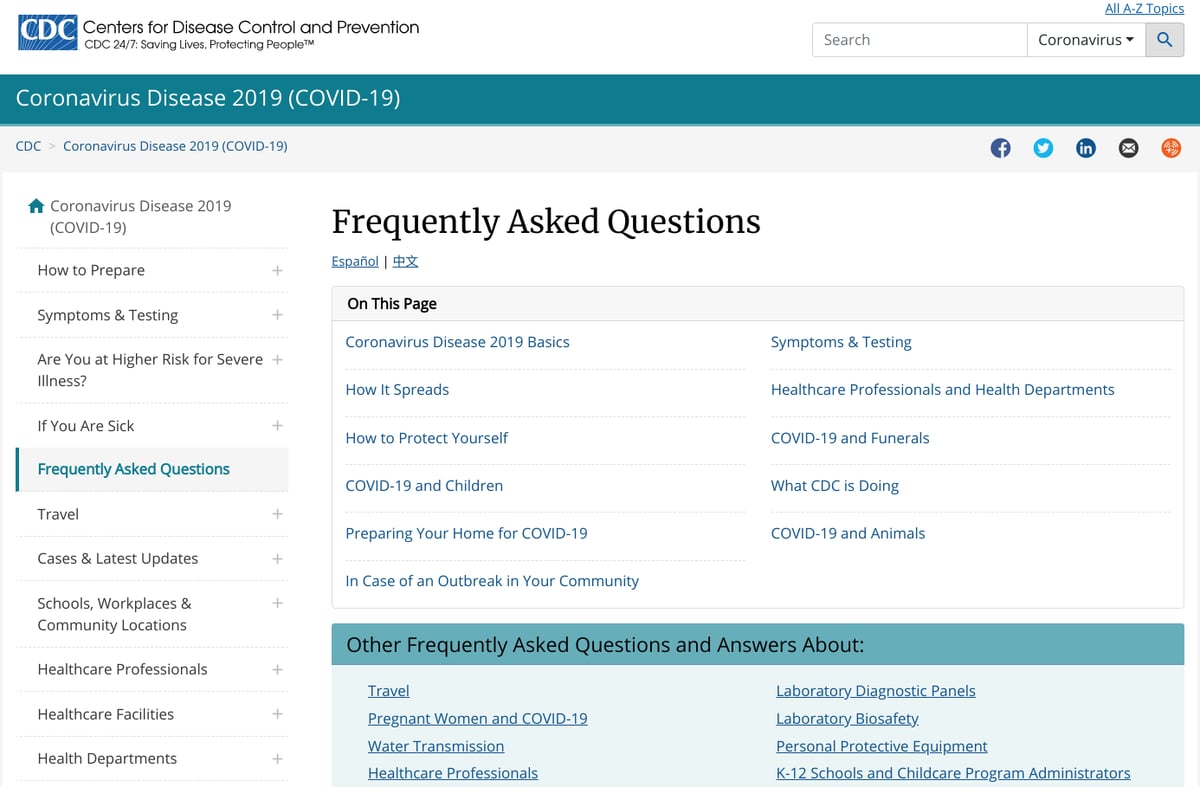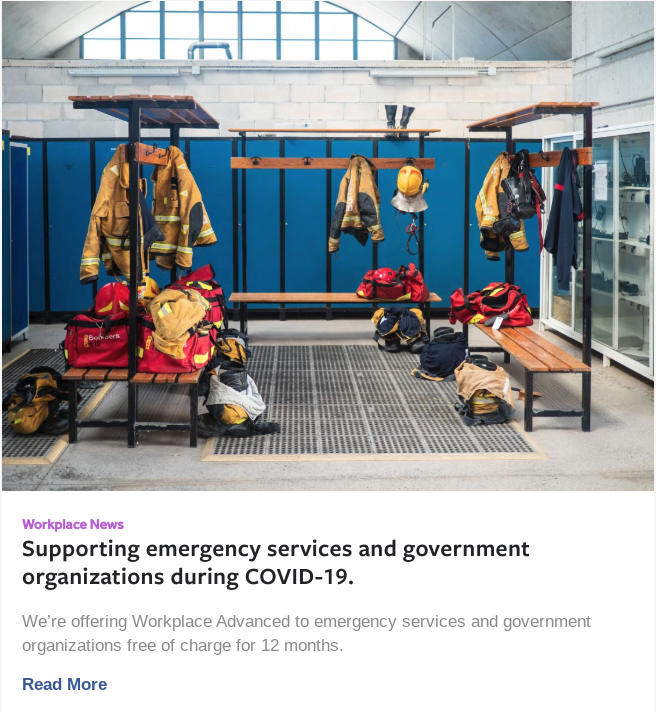The impact that COVID-19 has had is unprecedented. Of course, there is the impact of the disease itself, but it is also forcing organizations to continue to operate while a large portion of its employees work from home.
 For the public sector, this new way of working offers unique challenges. There’s obviously a lot that cannot be accomplished remotely, but even core agencies are changing the way they operate in order to reduce the spread of the virus. Many police departments, for instance, have closed their front desks and are practicing social distancing.
For the public sector, this new way of working offers unique challenges. There’s obviously a lot that cannot be accomplished remotely, but even core agencies are changing the way they operate in order to reduce the spread of the virus. Many police departments, for instance, have closed their front desks and are practicing social distancing.
Please read this important information regarding the deployment of LAPD area detectives and front desk operations #COVID19 pic.twitter.com/7f13G7JwZP
— LAPD HQ (@LAPDHQ) March 17, 2020
For government social media managers and public information officers (PIOs) this all creates challenges. The public is desperate for information, not only about the spread of the disease, but also about available services and potential closures. And when the situation is evolving on an hourly basis, providing this crucial information can be difficult.
Here are 13 tips for social media managers and PIOs dealing with this public emergency.
1. Be Honest and Open (and Human)
At a time like this, maintaining the public’s trust in government organizations is the most important thing that social media managers and PIOs can do. With so much misinformation out there, the public needs to know that they can trust information coming from official sources. So being open and honest is critical. It’s also okay to be human. Yes, this is a very serious situation, but people appreciate it when you speak to them like a normal person, instead of simply delivering a canned response that feels inauthentic.
Alright, serious note. #COVID19 is less than ideal. It sucks. We’re gonna bring you info from the right sources, bring some levity, and do our best to stay healthy to keep serving you. That’s our pledge. Do your part, follow advice, and we’ll rock this together, but apart.
— Lawrence Police (@LawrenceKS_PD) March 14, 2020
2. Consider Your Goals
Communicating frequently and being open in your communication is crucial, but you should also consider the ultimate goal of anything you put out. In other words, ask why you’re posting a message. What is the intention? What is the outcome you’re hoping to see? How will you measure your success? With the situation developing quickly—and lots of questions being fired at you from all directions—it can be tempting to publish constantly. But don’t post anything that doesn’t further your goals. While things are developing quickly, it’s still important to have some sort of communication strategy in place and not simply react to whatever’s happening around you.
3. Remember Your Audience(s)
As always, consider your messaging from the perspective of your audience. And remember that they probably don’t have all the information and context that you have. So you want to ask yourself if your messages will make sense to those who have less information. It’s also important to keep in mind that you’re probably dealing with multiple audiences. The public will be following you for information, but healthcare companies and other public-sector organizations are likely also turning to you for crucial updates. So before a message goes out the door, (i) ask yourself who the intended audience is and (ii) consider how an unintended reader may respond to it. For example, what might a layperson make of a message aimed at healthcare professionals? Also, be responsive to the changing information needs of the public. As the situation evolves, there will be new questions and concerns, so pay close attention to what the needs of your audience are.
4. Develop and Refine Your Outreach Strategy
At times like these, many rely on social media platforms like Twitter for the latest breaking news. And there’s no denying that social media can be an incredibly useful tool during a crisis period. However, an effective communication plan will consist of multiple channels. Teams need to consider what the right mix of channels looks like for their particular situation. What sort of information should be posted on social media? What should be sent out in an email or press release? What will the messaging on the official website look like during this period?
5. Create a Dedicated Landing Page
With the above in mind, it’s a good idea for an organization to create a dedicated COVID-19 landing page aimed at its audience. This page can become the hub for all other official communications. Here’s a great example of a simple but very effective page the City of Greeley created to inform citizens of the situation in their area. Here’s another excellent resource page from the League of California Cities, as well as one from the California Association of Public Information Officials (CAPIO).
 6. Establish Official Talking Points
6. Establish Official Talking Points
While it’s important to remain open and honest in all your communication, it’s equally vital that you create (and regularly) update a “talking points” document that outlines what the official position of the organization is on various issues. With so much misinformation flying around, inconsistent messaging from a government organization can really damage trust, so everyone should be delivering the same key messages. Here are examples of documents from Sacramento County and Yolo County.
7. Create Outreach Materials and an FAQ document
Unsurprisingly, PIOs and social media managers are being inundated with questions at the moment. Instead of trying to respond to those on a one-by-one basis, teams should be sensitive to changing information needs and create outreach materials that preemptively answer the most pressing concerns. Sure, it will take time and resources to create these, but they will be worth the effort. An FAQ page, PDF, or infographic can be particularly useful. Here’s what the CDC’s Coronavirus Disease 2019 (COVID-19) FAQ page looks like.
8. Rely on Credible Sources
Speaking of the CDC, it’s worth emphasizing the importance of relying on credible sources when communicating anything related to COVID-19. This is true when it comes to official communications like press releases, but also extends to less significant activity, such as what an official account chooses to share and “like” on Facebook and Twitter. By illustrating that you rely only on official credible sources, you help build the public’s trust in your organization and its messaging.
9. Consider Your Hashtags Carefully
Social media is being dominated by Coronavirus-related hashtags at the moment. While it’s typically a best practice to leverage a hashtag that’ll help your message reach more eyes and ears, now is the time to consider your hashtag use a little more carefully. Even relatively benign hashtags like #covid19 and #coronavirus runs the risk of lumping your posts in with uncurated content that’ll possibly confuse your audience. And any hashtag related to topics like #pandemic should definitely be avoided, since they can spread fear and panic.
10. Share Educational Content
While social media can spread scary stats and false information, it can also be used to calm people down and even save lives. Given the reach that a post can have, sharing basic but vital information around topics like hygiene and social distancing can have a real impact. No official government social media account should waste an opportunity to share useful information from a credible source, even if that simply means retweeting a message from your local health authority.
When it comes to #COVID19 who can you trust? Look to @DurhamHealthNC @ncdhhs @CDCgov or their official websites for up to date info. Check on family friends by phone or text & remember #SocialDistanacing🙋♀️<-----> 🙋♂️#HandWashing👏, and #CoveringYourCough 🌡️ are important for all. https://t.co/6tPxfFMz0x
— Durham Sheriff (@DurhamSheriff) March 19, 2020
11. Promote Crucial Initiatives
Along the lines of the previous point, social media is also a great place to share information about important initiatives in your region. Many vital services are in need of resources and support during a crisis, so any PIOs and social media managers who have the ability to promote initiatives to their audiences should definitely do so. An official social media account is also a great place to highlight some of the heroes on the ground.
🚨 Volunteers Needed 🚨
— California Volunteers (@CalVolunteers) March 18, 2020
Food banks are at the front line keeping Californians connected to food resources during these difficult times but they cannot do it alone.
Wondering what you can do?
Visit https://t.co/stYoAc7SnV to identify a food bank that you can support near you. pic.twitter.com/0dpW3i7aqW
12. Decide on a Strategy to Deal with Comments
Social media comments can be a challenge at the best of times, but during a crisis they can become overwhelming. Because of this, it’s important to have some sort of strategy in place to deal with them. For instance, what will you do when people share conspiracy theories or incite panic on your official channels? Knowing what stays, what gets hidden, and what gets deleted is important. If your organization is dealing with a deluge of comments, it might even be worth disabling comments on certain platforms. And if you haven’t reviewed your official social media policy in a while, now is a very good time to do so.
13. Adopt Team Collaboration Tools
A final tip worth mentioning is that there has never been a better time to adopt team collaboration tools. These can be great at empowering distributed government teams, and because of this, Facebook has announced that it is offering Workplace Advanced to emergency services and government organizations free of charge for 12 months.
Looking for more useful content? Check out 11 Online Tools & Resources for Government Social Media Managers and 5 Social Media Platforms Perfect for Government Organizations.









